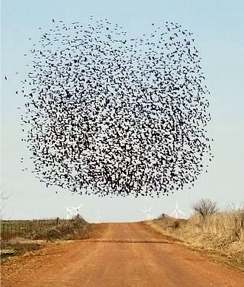Rampant narcissism and social cheating – the importance of teaching social evolutionary mechanisms

As socioeconomic inequality grows, the publicly acknowledged importance of traits such as honesty, loyalty, self-sacrifice, and reciprocity appears to have fallen out of favor with some of our socio-economic and political elites. How many people condemn a person as dishonest one day and embrace them the next? Dishonesty and selfishness no longer appear to be taboo, or a source of shame that needs to be expurgated (perhaps my Roman Catholic upbringing is bubbling to the surface here). A disavowal of shame and guilt and the lack of serious social censure appears to be on the rise, particularly within the excessively wealthy and privileged, as if the society from which they extracted their wealth and fame does not deserve their active participation and support [link: Hutton, 2009]. They have embraced a "winning takes all" strategy.
If an understanding of evolutionary mechanisms is weak within the general population [link], the situation is likely to be much worse when it comes to an understanding of the role and outcomes of social evolutionary mechanisms. Yet, the evolutionary origins of social systems, and the mechanisms by which such systems are maintained against the effects of what are known as "social cheaters", are critical to understanding and defending, human social behaviors such as honesty, cooperation, loyalty, self-sacrifice, self-restraint, mutual respect, responsibility and kindness.
While evolutionary processes are often caricatured as favoring selfish behaviors, the facts tell a more complex, organism-specific story [link: Aktipis 2016]. Cooperation between organisms underlies a wide range of behaviors, from sexual reproduction and the formation of multicellular organisms (animals, plants, and people) to social systems, ranging from microbial films to bee colonies and construction companies [see Bourke, 2011: Principles of Social Evolution] [Wikipedia link].

One of the best studied of social systems involves the cellular slime mold Dictyostelium discoideum [Wikipedia link]. When life is good, that is when the world is moist and bacteria, the food of these organisms, are plentiful, D. discoideum live and reproduce happily as single celled amoeba-like individuals in soil. Given their small size (~5 μm diameter), they cannot travel far, but that does not matter as long as their environment is hospitable. When the environment turns hostile, however, an important survival strategy is to migrate to a new location – but what is a little guy to do? The answer in this species is to cooperate. Individual amoeba begin to secrete a chemical that acts to attract others; eventually thousands of individuals aggregate to form a multicellular "slug"; slugs migrate around to find a hospitable place and then differentiate into a fruiting body that stands ~1mm (20x the size of an individual amoeba) above the ground. To form the stalk that lifts the "fruiting body" into the air, a subset of cells (once independent individuals) change shape. These stalk cells die, while the rest of the cells form the fruiting body, which consists of spores – cells specialized to survive dehydration. Spores are released into the air where they float and are dispersed over a wide range. Those spores that land in a happy place (moist and verdant), revert to the amoeboid life style, eat, grow, divide and generate a new (clonal) population of amoeboid cells: they have escaped from a hostile environment to inhabit a new world, a migration made possible by the sacrifice of the cells that became the stalk (and died in the process). Similar types of behavior occur in a wide range of macroscopic organisms [Scrambling to the top: link]. Normally, who becomes a stalk cell and who becomes a spore is a stochastic process [see previous PLoS blog post on stochastics and biology education].
Cheaters in the slime mold system are individuals who take part in the aggregation process (they respond to the migration signal and become part of the slug), but have altered their behavior to avoid becoming a stalk cell – no self-sacrifice for them. Instead they become spores. In the short run, such a strategy can be beneficial to the individual, after all it has a better chance of survival if it can escape a hostile environment. But imagine a population made up only of cheaters – no self-sacrifice, no stalk, no survival advantage = death [see link: Strassmann & Queller, 2009].
A classic example of social cheating with immediate relevance to the human situation is cancer. Within a sexually reproducing multicellular organism, reproduction is strictly restricted to the cells of the germ line – eggs and sperm. The other cells of the organism, known collectively as somatic cells, have ceded their reproductive rights to the organism as a whole. While somatic cells can divide, they divide in a controlled and strictly regulated (unselfish) way. Somatic cells do not survive the death of the organism – only germ line cells (sperm and eggs) are able to produce a new organism. In the end cellular cooperation has been a productive strategy, as witness the number of different types of multicellular organisms, including humans. If a somatic cell breaks the social contract and cheats, that is, begins to divide (asexually) in an independent manner, it can lead to the formation of a tumor and later, if the cells of the tumor start to migrate within the organism, to metastatic cancer. More rarely (apparently) such cells can migrate between organisms, as in the case of transmissible cancers in dogs, Tasmanian Devils, and clams [see links: Murchison 2009 and Ujvari et al 2016). The growth and evolution of the tumor cell leads to the death of the organism and the cancer cells' own extinction, another example of the myopic nature of evolutionary processes.

In the case of cancer the organism's defenses against social cheaters comes in two forms, intrinsic to the individual cheater cells, in the form of cell suicide (known through a number of technical terms including apoptosis, anoikis and necroptosis)[link: Su et al., 2015] and extrinsic and organismic processes, such as the ability of the organism's immune system to identify and kill cancer cells – a phenomena with therapeutically relevant implications [link: Ledford, 2014]. We can think of these two processes as guilt + shame (leading to cellular suicide) and policing + punishment (leading to immune system killing). For a cell to escape growth control and to evolve to produce metastatic disease, it needs to inactivate or ignore intrinsic cell death systems and to evade the immune system.
To consider another example, social systems are based on cooperation, often involving the sharing of resources with those in need. A recent example is the sharing of food (blood) between vampire bats [see link: Carter & Wilkinson, 2013]. The rules, as noted by Aktipis, are simple, 1) ask only when in need and 2) give when asked and able. In this context, we can identify two types of social cheaters – those who ask when they do not need and those you fail to give when asked and able. People who refuse to work even when they can and when jobs are available fall into the first group, the rich who avoid taxes and fail to donate significant funds to charities the other. It is an interesting question of how to characterize those who borrow money and fail to repay it. Bankruptcy laws that protect the wealth of the borrower while leading to losses to the lender might be seen as acting to undermine the social contract (clearly philosophers' and economists' comments here would be relevant).
Given that social systems at all levels are based on potentially costly traits, such as honesty, loyalty, self-sacrifice, and reciprocity, the evolutionary origins of social systems must lie in their ability to increase reproductive success, either directly or through effects on relatives, a phenomena known as inclusive fitness [Wikipedia link]. Evolutionary processes also render social systems vulnerable to cheating and so have driven the development of a range of defenses against various forms of social cheaters (see above). But recent political and cultural events appear to be acting to erode and/or ignore society's defenses.
So what to do? Revolution? From a PLoS Science education perspective, one strategy suggests itself: to encourage (require) that students and the broader public be introduced to effective instruction on social evolutionary mechanisms, the traits they can generate (various forms of altruism and cooperation), the reality and pernicious effects of social cheaters, and the importance of defenses against them. In this light, it appears that social evolutionary processes are missing from the Next Generation Science Standards [NGSS link]. Understanding the biology, together with effective courses in civics [see link: Teaching Civics in the Year of The Donald] might serve to bolster the defense of civil society.
Provided by Public Library of Science
This story is republished courtesy of PLOS Blogs: blogs.plos.org.


















